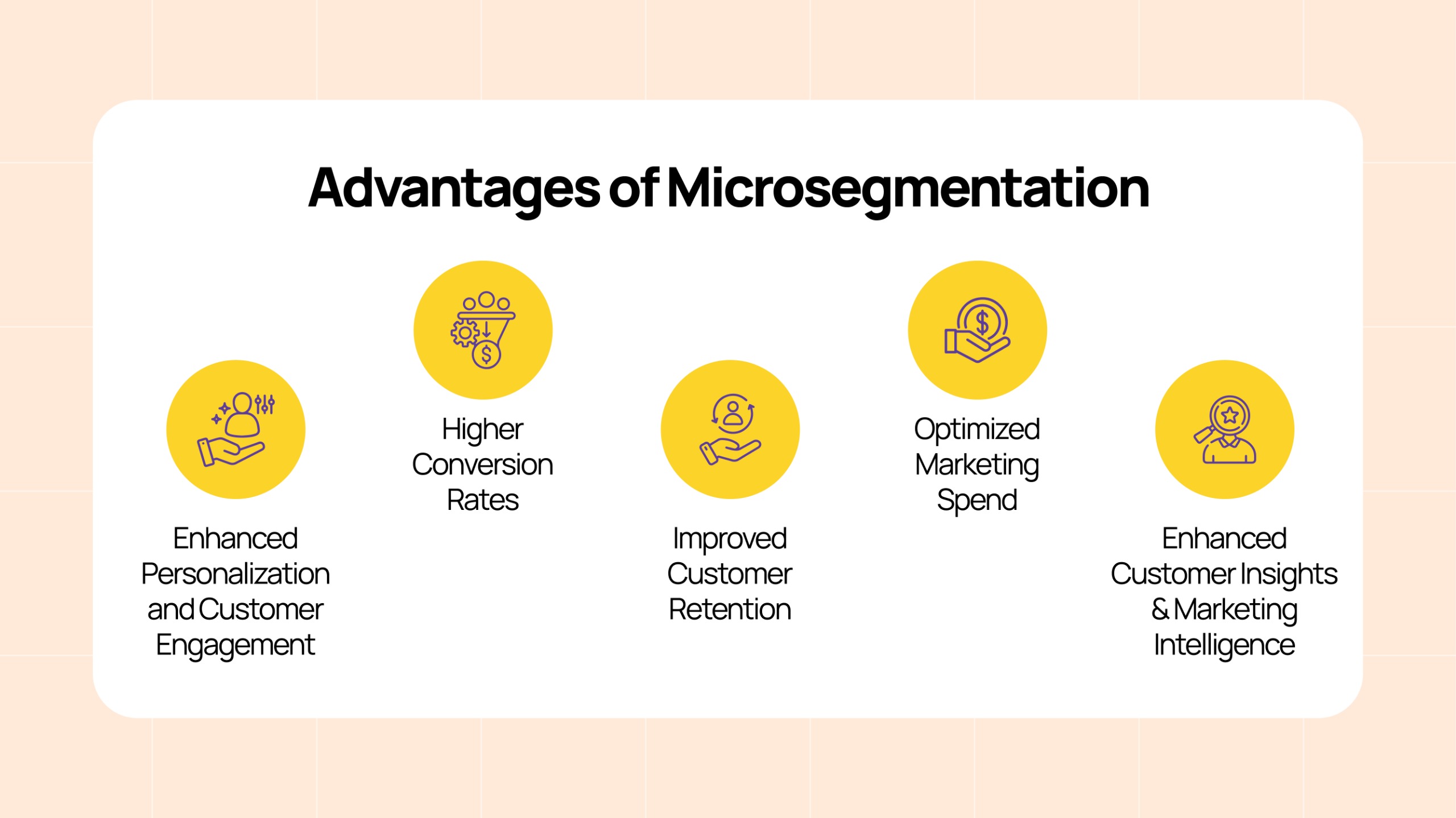
What if your marketing strategy didn’t just react to customer behavior but evolved alongside it?
In 1956, Wedell R. Smith showed us that no two customers are alike, which led to the idea of segmentation. Today, as customers become more sophisticated and expect personalized experiences, the need for more precise targeting has never been greater. This is especially true for retailers with multiple outlets, where reaching the right customer with the right message at the right time requires more than just broad categories. It means understanding the small details—the unique preferences, behaviors, and interactions that make each customer different.
How do you ensure your brand stands out and truly connects with customers in a marketplace filled with options? The answer is customer microsegmentation.
What is Customer Microsegmentation?

Microsegmentation refers to a marketing strategy that divides the entire customer base into smaller and highly specific segments on the basis of behavior, preferences, and interactions. With this strategy, retailers target niche behaviors, which allows businesses to create personalized marketing campaigns.
The core of microsegmentation lies in its ability to use data-driven insights to understand the unique buying habits and motivations of each customer. By analyzing factors such as purchase history, website interactions, social media activity, and demographic details, brands can create highly relevant offers, content, and messaging.
Advantages of Microsegmentation
The concept of micro-segmentation is no longer just a marketing buzzword. Instead, it helps retailers create deeper connections with their customers and eventually develop a better marketing strategy.
Thus, the key advantages include:

- Enhanced Personalization and Customer Engagement
Personalization is one of the key aspects of modern marketing, and microsegmentation takes it to the next level. For instance, recent Epsilon data reveals, 71% of consumers expect brands to deliver personalized experiences, and 80% of customers are more likely to make a purchase when offered a personalized experience.
Thus, the division of the customer base into ultra-specific groups allows brands to deliver highly relevant content and offers.
- Higher Conversion Rates
According to the global ranking and finance review data of 2025, businesses that use dynamic and advanced segmentation strategies experience a 15% increase in their conversion rates. This is probably because microsegmentation focuses on delivering the right message at the right time through the right channel. Customers act better with targeted campaigns because it aligns with their needs, interests, and buying patterns.
- Improved Customer Retention
Tailoring marketing strategies according to the needs and preferences of the customers helps businesses enhance their lifetime value (LV) and build stronger relationships. A recent stat from Twilio aligns with this statement, which said that 62% of business leaders say that their personalization efforts have improved their retention rate.
- Optimized Marketing Spend
Retailers can avoid wasting thousands of rupees by making sure that their campaigns are being targeted to relevant customer groups only. One of the data suggests that segmentation helps businesses in reducing the marketing costs by up to 30%. By focusing on high-value, highly engaged segments, marketers can improve return on investment (ROI) and make smarter decisions about where to allocate resources.
- Enhanced Customer Insights & Marketing Intelligence
The process provides valuable insights into customer behavior, preferences, and needs, helps retailers to understand their target audience better. With detailed data on how different segments interact with your brand, you can optimize your product offerings and marketing strategies to meet customer demand more effectively.
Microsegmentation Vs. Macrosegmentation
Macrosegmentation
The word macrosegmentation refers to dividing the customers into broad, large, and generalized customer segments based on general characteristics like demography, geography, and psychography. These segments can include individuals from categories like age, income, gender, location, and industry. It is a broader approach that segments customers who have similar needs and interests together.
Microsegmentation
On the contrary, microsegmentation takes a step further and segments the customer into smaller and highly specific groups depending on detailed data like individual behaviour, interests, purchase history, and even the individual engagement with the brand. Thereby allowing brands to create personalized marketing efforts tailored to a more granular customer base.

Factors for Microsegmentation in Retail Marketing
- Behavioral Data
One of the major aspects of segmentation is the behavioral data. This data involves analyzing how customers interact with your brand across different channels—whether online or in-store. It’s not just about what they buy but how they shop: the time spent browsing, click patterns, product preferences, and even browsing history.
- Transactional Data
Past purchasing behavior reveals patterns and can help predict future needs. By analyzing the value and frequency of past purchases, retailers can identify high-value segments and target them with timely offers.
- Demographic Data
Demographic factors like age, income, education, and location help marketers identify broad characteristics that can later be refined through behavioral insights.

- Psychographic Data
Psychographic data like lifestyle, values, and motivations helps marketers target customers on the basis of emotional drivers which helps in creating an authentic and personalized experience. This, in turn, inspires loyalty among consumers and provokes them to make a move.
- Geographical Data
This type of data helps retailers to cater to the regional needs of their customers, which can further be classified based on climate-specific needs. Understanding local preferences of the customers allows brands to come up with location-specific campaigns that feel more relevant to each audience.
- Customer Journey Data
Customer journey data tracks customer interactions with your brand across various touchpoints. It shows where they are in the decision-making process, which enables marketers to deliver the right message at the right time.
Conclusion
The ability to move from generalized mass marketing to tailored one-to-one communication is no longer a luxury but a necessity. With the right data and the power of microsegmentation, your brand can have the potential to build lasting relationships, drive increased sales, and solidify a stronger market position.
Thus, the question isn’t whether you can afford to implement microsegmentation—it’s whether you can afford not to.